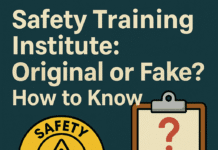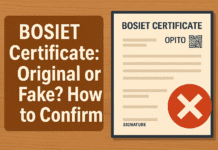
Canadian Registered Safety Professional (CRSP)
The Canadian Registered Safety Professional (CRSP) designation is a professional certification in the field of occupational health and safety (OHS) in Canada. CRSPs are recognized as experts in OHS, and they play a crucial role in ensuring workplace safety and promoting health and well-being for employees in various industries.
Here are some key points about the CRSP designation:
- Certification Authority: The CRSP designation is administered by the Board of Canadian Registered Safety Professionals (BCRSP), an independent, not-for-profit organization. The BCRSP sets the standards for certification and oversees the certification process.
- Eligibility Requirements: To become a CRSP, individuals must meet specific educational and professional experience requirements. Typically, candidates need a combination of formal education and work experience related to OHS. The exact requirements may vary, so it’s essential to check with the BCRSP for the most up-to-date information.
- Examination: Candidates for the CRSP designation must pass a comprehensive examination that assesses their knowledge and competencies in various areas of occupational health and safety. The examination is designed to ensure that CRSPs are well-equipped to address workplace safety issues effectively.
- Continuing Professional Development: CRSPs are required to engage in ongoing professional development to maintain their certification. This includes participating in training, workshops, conferences, and other activities to stay current with best practices and emerging trends in OHS.
- Code of Ethics: CRSPs adhere to a strict code of ethics, which includes principles of professionalism, integrity, and confidentiality. They are expected to conduct themselves ethically and responsibly in their OHS roles.
- Roles and Responsibilities: CRSPs work in a variety of industries and settings, including construction, manufacturing, healthcare, and government agencies. They are responsible for assessing workplace hazards, developing safety policies and procedures, conducting safety audits, and providing OHS training to employees.
- Recognition and Accreditation: The CRSP designation is widely recognized and respected in Canada and is often a requirement for many OHS positions. Employers may prefer or require candidates with CRSP certification due to the rigorous training and examination process.
- Advocacy and Promotion: CRSPs often play a role in advocating for workplace safety at the organizational and national levels. They may participate in industry associations, collaborate with government agencies, and contribute to the development of safety standards and regulations.
How to Become a Certified Industrial Hygienist (CIH)?
How to Become a Certified Safety and Health Manager (CSHM)?
How to Become an ISO 45001 Lead Auditor?
CSHM Certification Course: Fees, Duration, Eligibility, Course Content, and Application Process
In summary, the CRSP designation is a prestigious and respected certification for professionals in the field of occupational health and safety in Canada. CRSPs are committed to ensuring safe and healthy working environments for employees across various industries and are dedicated to continuous professional development to stay at the forefront of OHS practices and regulations.
























